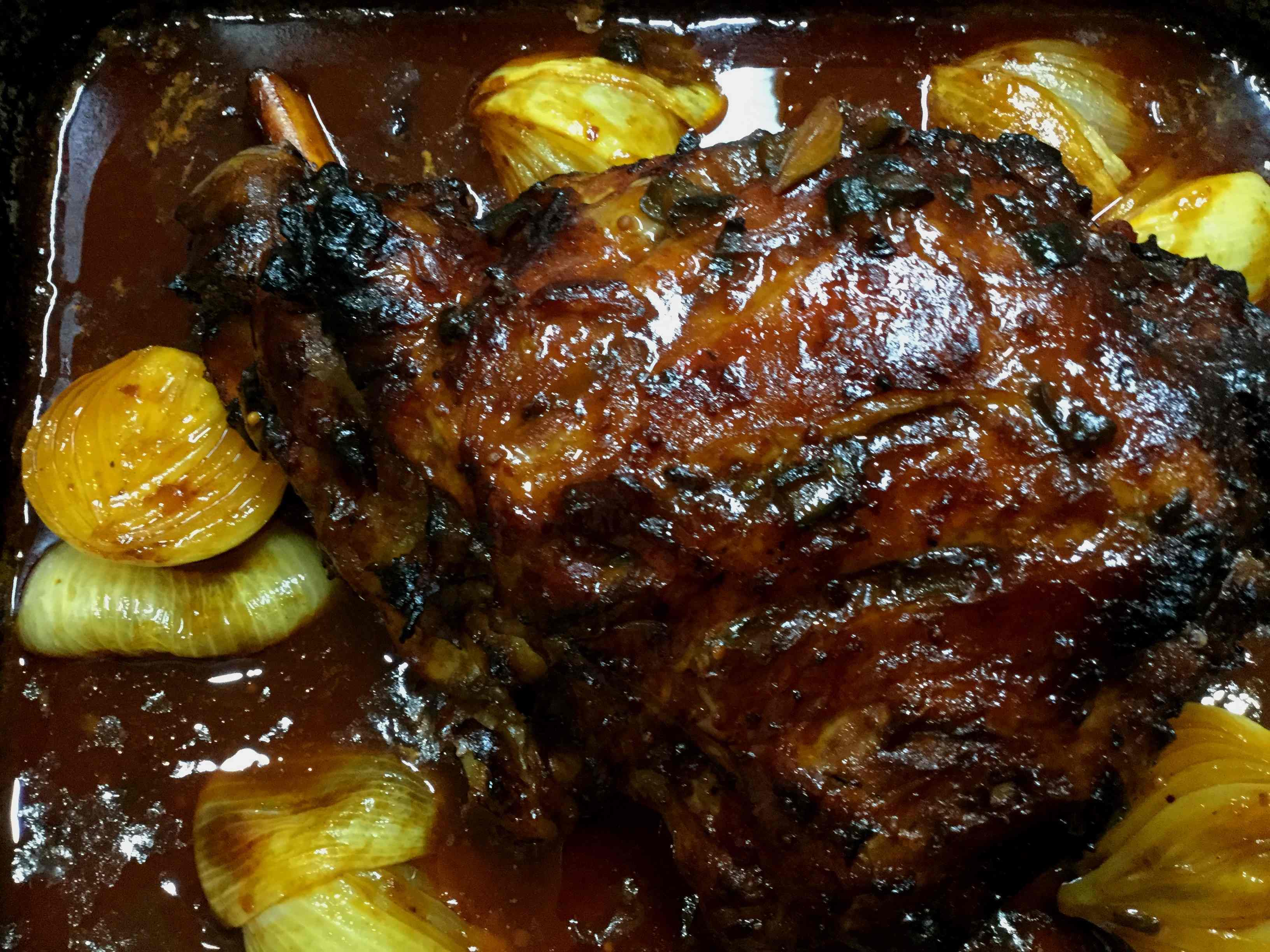Lamb Leg Roasted in Chutney
Slow-cooked lamb recipes are everywhere, with many celebrity chefs publishing their own version. Their recipes sound exotic and magical, offering special results; and generally they do.
However, you don’t need an exotic recipe to produce a wonderful result. Try this surprise method then experiment with your own versions. Don’t be surprised if this is up there with the most delicious lamb you have ever cooked!
What was in the fridge that prompted this blog post? Well it was in the pantry, actually: a small jar of store bought fruit chutney that had been sitting there unopened for too long.
Some years ago, a friend at my gym, Civ, told me how she often cooks a leg of lamb with fruit chutney. We have tried it a number of times, with variations, and with great success. A lamb roast could not be easier!
Basic Method
You can use a leg of lamb, bone in or tunnel boned, or a shoulder (though it is generally more fatty). Take the meat from the fridge so that it is at room temperature when it goes into the oven. Trim off excess fat and score the skin with a sharp knife. Place the meat in a baking dish and empty 250g of fruit chutney over it and spread it all around and into the cuts, and inside too if it is deboned. Turn the oven to 150oC, cover the roast (with a lid preferably, or foil, but trying not to get the chutney stuck on the foil). Cook for three to five hours, depending on your requirements and whether you like the meat less or more cooked. Check from time to time and baste with the juices. Remove the cover for the last hour or so, basting once or twice to produce a caramelised finish. (You can cook the roast for less time at 180oC if you need it quickly.)
You can add some vegetables to the baking dish an hour or so from the end. Serve the roast with baked or steamed vegies, or with a salad and crusty bread, and the delicious sauce from the bottom of the baking dish skimmed of some of the fat.
The cold meat is wonderful, as is the leftover sauce!
Plenty of Room to Experiment
Try different types of chutneys, relishes or pickles, such as quince or mango. You can add some herbs and spices or other ingredients: for the lamb in these photographs we included the remains of a jar of caramelised onion, a dessert spoon of Indian curry paste and about a quarter of a cup of pickling liquid and spices. Then we followed the basic method.
Other options before adding the marinade include sticking shards of garlic and rosemary into the flesh in different spots and/or rubbing the roast all over with lemon juice. You could pour a couple of tablespoons of soy sauce on top of the marinade.
Contributions welcomed!
If you have any inspirational moments based on what’s in the fridge or on the shelves, we are happy to hear about them, including the ingredients, (good quality photos if you have any) and why it turned out so well.





